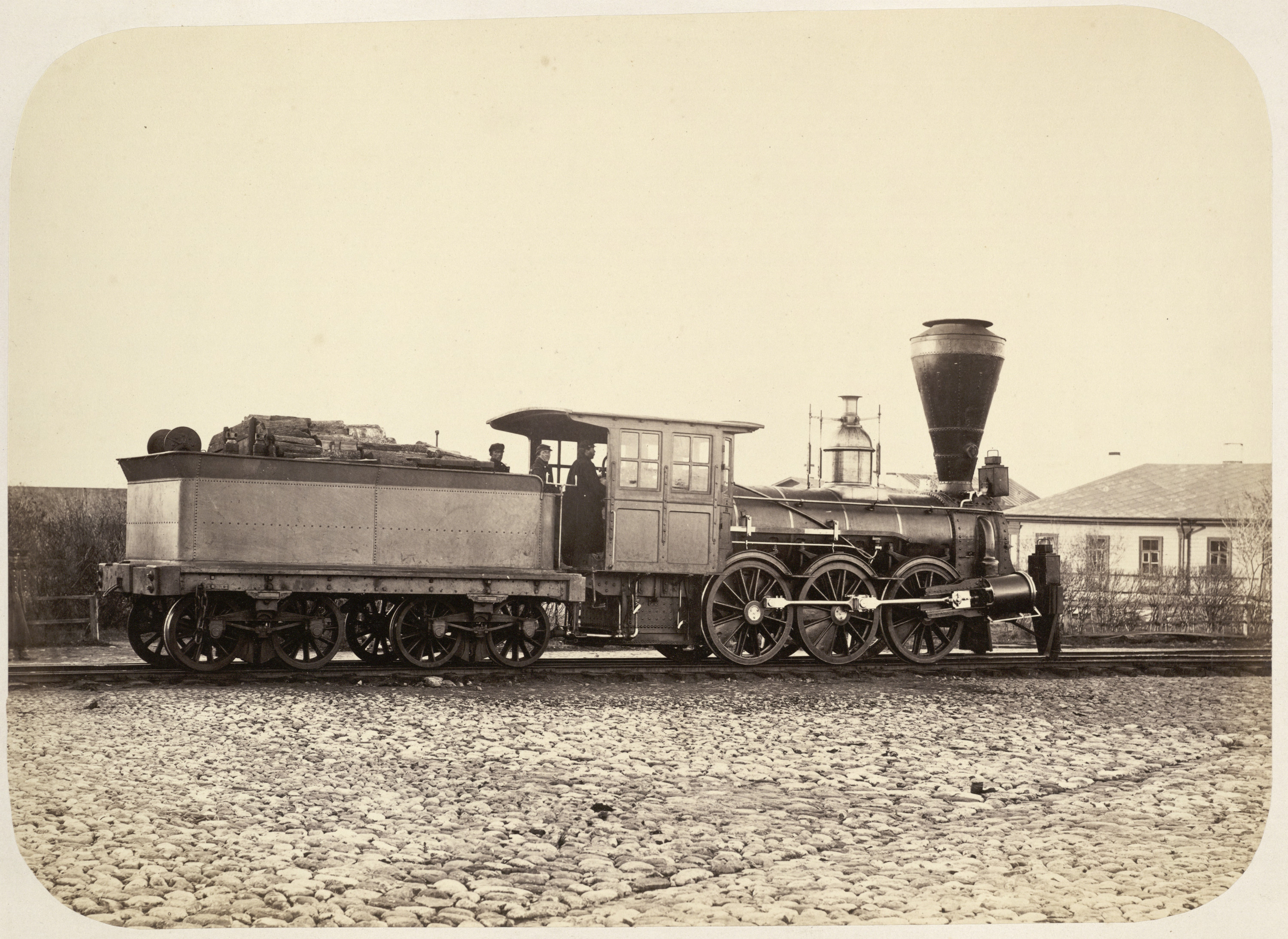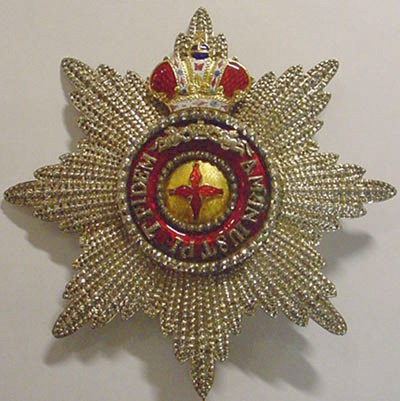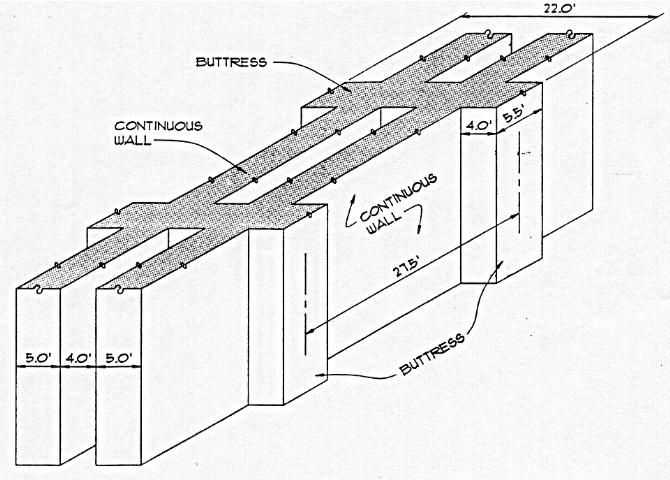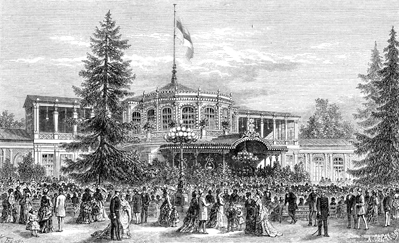|
Saint Petersburg–Moscow Railway
The Saint Petersburg to Moscow railway (1855–1923 – ''Nikolaevskaya railway'') runs for through four oblasts: Leningrad, Novgorod, Tver and Moscow. It is a major traffic artery in the north-west region of Russia, operated by the October Railway subdivision of Russian Railways. History Context On 1 February 1842, Tsar Nicholas I issued a ukase ordering the railway's construction. The railway was a pet project of Pavel Melnikov (1804–1880), an engineer and administrator who supervised its construction and whose statue may be seen near the southern terminus, the Leningradsky railway station in Moscow. The idea of a railway connecting the two capitals gave rise to a prolonged controversy, with some reactionary officials predicting social upheaval if the masses were allowed to travel. It was decided that only the affluent would be allowed to use the line; every passenger was to be subjected to strict passport and police control. Although the Tsarskoye Selo Railway, ... [...More Info...] [...Related Items...] OR: [Wikipedia] [Google] [Baidu] |
Sapsan
The ''Sapsan'' (russian: Сапсан, lit=Peregrine Falcon The peregrine falcon (''Falco peregrinus''), also known as the peregrine, and historically as the duck hawk in North America, is a Cosmopolitan distribution, cosmopolitan bird of prey (Bird of prey, raptor) in the family (biology), family Falco ..., known as Velaro RUS EVS) is a Russian gauge high-speed rail in Russia, high speed electric express train. The train is a Siemens Velaro model, which in turn is based on the ICE 3M/F high-speed trains manufactured by Siemens for the German Deutsche Bahn (DB), known as the Siemens Velaro#Velaro RUS (RZD Sapsan), Siemens Velaro RUS. The trains started regular service on the Saint Petersburg–Moscow Railway in December 2009 at a maximum speed of (a new build high-speed line would allow for speeds of up to ). On 22 March 2022, following the 2022 Russian invasion of Ukraine, Siemens suspended its contract to supply additional trainsets, as well as announcing it would end ... [...More Info...] [...Related Items...] OR: [Wikipedia] [Google] [Baidu] |
Moscow Oblast
Moscow Oblast ( rus, Моско́вская о́бласть, r=Moskovskaya oblast', p=mɐˈskofskəjə ˈobləsʲtʲ), or Podmoskovye ( rus, Подмоско́вье, p=pədmɐˈskovʲjə, literally "under Moscow"), is a federal subject of Russia (an oblast). With a population of 7,095,120 ( 2010 Census) living in an area of , it is one of the most densely populated regions in the country and is the second most populous federal subject. The oblast has no official administrative center; its public authorities are located in Moscow and Krasnogorsk (Moscow Oblast Duma and government), and also across other locations in the oblast.According to Article 24 of the Charter of Moscow Oblast, the government bodies of the oblast are located in the city of Moscow and throughout the territory of Moscow Oblast. However, Moscow is not named the official administrative center of the oblast. Located in European Russia between latitudes 54° and 57° N and longitudes 35° and 41° E ... [...More Info...] [...Related Items...] OR: [Wikipedia] [Google] [Baidu] |
Serfdom In Russia
The term '' serf'', in the sense of an unfree peasant of tsarist Russia, is the usual English-language translation of () which meant an unfree person who, unlike a slave, historically could be sold only with the land to which they were "attached". Peter I ended slavery in Russia in 1723. Contemporary legal documents, such as ''Russkaya Pravda'' (12th century onwards), distinguished several degrees of feudal dependency of peasants. Serfdom became the dominant form of relation between Russian peasants and nobility in the 17th century. Serfdom most commonly existed in the central and southern areas of the Tsardom of Russia and, from 1721, of the subsequent Russian Empire. Serfdom in Little Russia (parts of today central Ukraine), and other Cossack lands, in the Urals and in Siberia generally occurred rarely until, during the reign of Catherine the Great (r. 1762–1796), it spread to Ukraine; noblemen began to send their serfs into Cossack lands in an attempt to harvest their ex ... [...More Info...] [...Related Items...] OR: [Wikipedia] [Google] [Baidu] |
Cholera
Cholera is an infection of the small intestine by some strains of the bacterium ''Vibrio cholerae''. Symptoms may range from none, to mild, to severe. The classic symptom is large amounts of watery diarrhea that lasts a few days. Vomiting and muscle cramps may also occur. Diarrhea can be so severe that it leads within hours to severe dehydration and electrolyte imbalance. This may result in sunken eyes, cold skin, decreased skin elasticity, and wrinkling of the hands and feet. Dehydration can cause the skin to turn bluish. Symptoms start two hours to five days after exposure. Cholera is caused by a number of types of ''Vibrio cholerae'', with some types producing more severe disease than others. It is spread mostly by unsafe water and unsafe food that has been contaminated with human feces containing the bacteria. Undercooked shellfish is a common source. Humans are the only known host for the bacteria. Risk factors for the disease include poor sanitation, not enough clea ... [...More Info...] [...Related Items...] OR: [Wikipedia] [Google] [Baidu] |
Order Of Saint Anna
The Imperial Order of Saint Anna (russian: Орден Святой Анны; also "Order of Saint Anne" or "Order of Saint Ann") was a Holstein ducal and then Russian imperial order of chivalry. It was established by Karl Friedrich, Duke of Holstein-Gottorp, on 14 February 1735, in honour of his wife Anna Petrovna, daughter of Peter the Great of Russia. Originally, the Order of Saint Anna was a dynastic order of knighthood; but between 1797 and 1917 it had dual status as a dynastic order and as a state order. The Order of St. Anna continued to be awarded after the revolution by Grand Duke Kirill Vladimirovich, Grand Duke Vladimir Kirillovich, and Grand Duchess Maria Vladimirovna. Today, the Russian Imperial Order of St. Anna, awarded by Grand Duchess Maria Vladimirovna is recognized as an order of chivalry by the privately operated ICOC as a continuation of the pre-Revolutionary order, and has been approved for wear with military uniform by the Russian Federation, but not by s ... [...More Info...] [...Related Items...] OR: [Wikipedia] [Google] [Baidu] |
Boston And Providence Railroad
The Boston and Providence Railroad was a railroad company in the states of Massachusetts and Rhode Island which connected its namesake cities. It opened in two sections in 1834 and 1835 - one of the Rail transport in the United States, first rail lines in the United States - with a more direct route into Providence built in 1847. Branches were built to Dedham in 1834, Stoughton in 1845, and North Attleboro in 1871. It was acquired by the Old Colony Railroad in 1888, which in turn was leased by the New Haven Railroad in 1893. The line became the New Haven's primary mainline to Boston; it was realigned in Boston in 1899 during the construction of South Station, and in Pawtucket and Central Falls in 1916 for grade crossing elimination. The line became part of the Penn Central system in 1969; the section in Massachusetts was purchased by the state in 1973, while Amtrak acquired the Rhode Island section in 1976. The line was electrified in 2000; it is now the far northern leg of Amtrak ... [...More Info...] [...Related Items...] OR: [Wikipedia] [Google] [Baidu] |
Canton Viaduct
Canton Viaduct is a blind arcade cavity wall railroad viaduct in Canton, Massachusetts, built in 1834–35 for the Boston and Providence Railroad (B&P). At its completion, it was the longest () and tallest () railroad viaduct in the world; today, it is the last surviving viaduct of its kind. It has been in continuous service for years; it now carries high-speed passenger and freight rail service. It supports a train deck about above the Canton River (United States), Canton River, the east branch (tributary) of the Neponset River. The stream pool passes through six semi-circular portals in the viaduct. The viaduct was the final link built for the B&P's then mainline between Boston, Massachusetts; and Providence, Rhode Island. Today, the viaduct serves Amtrak's Northeast Corridor, as well as Massachusetts Bay Transportation Authority (MBTA) Providence/Stoughton Line commuter trains. It sits 0.3 miles (0.5 km) south of Canton Junction (MBTA station), Canton Junction, at ... [...More Info...] [...Related Items...] OR: [Wikipedia] [Google] [Baidu] |
George Washington Whistler
George Washington Whistler (May 19, 1800 – April 7, 1849) was a prominent American civil engineer best known for building steam locomotives and railroads. He is credited with introducing the steam whistle to American locomotives. In 1842, Tsar Nicholas I hired him to build the Saint Petersburg–Moscow Railway, Russia's first large-scale railroad.Gasparini, D. A., K. Nizamiev, and C. Tardini. "GW Whistler and the Howe Bridges on the Nikolaev Railway, 1842–1851", American Society of Civil Engineers, ''Journal of Performance of Constructed Facilities'' 30.3 (2015): DOI link:04015046.https://dx.doi.org/10.1061/(ASCE)CF.1943-5509.0000791 One of Whistler's important influences was the introduction of the Howe truss for the Russian railroad's bridges. This inspired the renowned Russian engineer Dmitrii Ivanovich Zhuravskii (1821–1891) to perform studies and develop structural analysis techniques for Howe truss bridges. He was the father of American artist James McNeill Whi ... [...More Info...] [...Related Items...] OR: [Wikipedia] [Google] [Baidu] |
Tsarskoye Selo Railway
The Tsarskoye Selo Railway (russian: Царскосе́льская желе́зная доро́га) was the first public railway line in the Russian Empire.Pushkin Encyclopædia Britannica on-line on-line (in Russian) It ran for from to Pavlovsk through the nearby (4 km) |
Terminal Station
A train station, railway station, railroad station or depot is a railway facility where trains stop to load or unload passengers, freight or both. It generally consists of at least one platform, one track and a station building providing such ancillary services as ticket sales, waiting rooms and baggage/freight service. If a station is on a single-track line, it often has a passing loop to facilitate traffic movements. Places at which passengers only occasionally board or leave a train, sometimes consisting of a short platform and a waiting shed but sometimes indicated by no more than a sign, are variously referred to as "stops", "flag stops", " halts", or "provisional stopping places". The stations themselves may be at ground level, underground or elevated. Connections may be available to intersecting rail lines or other transport modes such as buses, trams or other rapid transit systems. Terminology In British English, traditional terminology favours ''railway station'' ... [...More Info...] [...Related Items...] OR: [Wikipedia] [Google] [Baidu] |
Pavel Petrovich Melnikov
Pavel Petrovich Melnikov (Russian: Павел Петрович Мельников, – in Lyuban) was a Russian engineer and administrator who, in his capacity as Transport Minister, was in a large measure responsible for the introduction of railroad construction in Imperial Russia. In 1825 Melnikov graduated at the head of his class from the Institute of Transport Engineers in the School for Communication Routes with the rank of Lieutenant in the Corps of Transport Engineers. He remained as a teacher at the Institute, becoming professor of applied mechanics in 1833. He also took part in several construction projects to improve the Russian network of rivers and canals. In 1833 he joined the St. Petersburg Artillery School. he was also responsible for repairing the wooden cupola of the Trinity Cathedral in St Petersburg.''Russia Enters the Railway Age, 1842-1855'', by Richard Haywood, Eastern European Monographs, 1998p20 In the Summer of 1839 Melnikov and another colonel, Ni ... [...More Info...] [...Related Items...] OR: [Wikipedia] [Google] [Baidu] |
Ukase
In Imperial Russia, a ukase () or ukaz (russian: указ ) was a proclamation of the tsar, government, or a religious leader (patriarch) that had the force of law. "Edict" and "decree" are adequate translations using the terminology and concepts of Roman law. From the Russian term, the word ''ukase'' has entered the English language with the meaning of "any proclamation or decree; an order or regulation of a final or arbitrary nature". History Prior to the 1917 October Revolution, the term applied in Russia to an edict or ordinance, legislative or administrative, having the force of law. A ukase proceeded either from the emperor or from the senate, which had the power of issuing such ordinances for the purpose of carrying out existing decrees. All such decrees were promulgated by the senate. A difference was drawn between the ukase signed by the emperor’s hand and his verbal ukase, or order, made upon a report submitted to him. After the Revolution, a government proclamation o ... [...More Info...] [...Related Items...] OR: [Wikipedia] [Google] [Baidu] |








.jpg)

